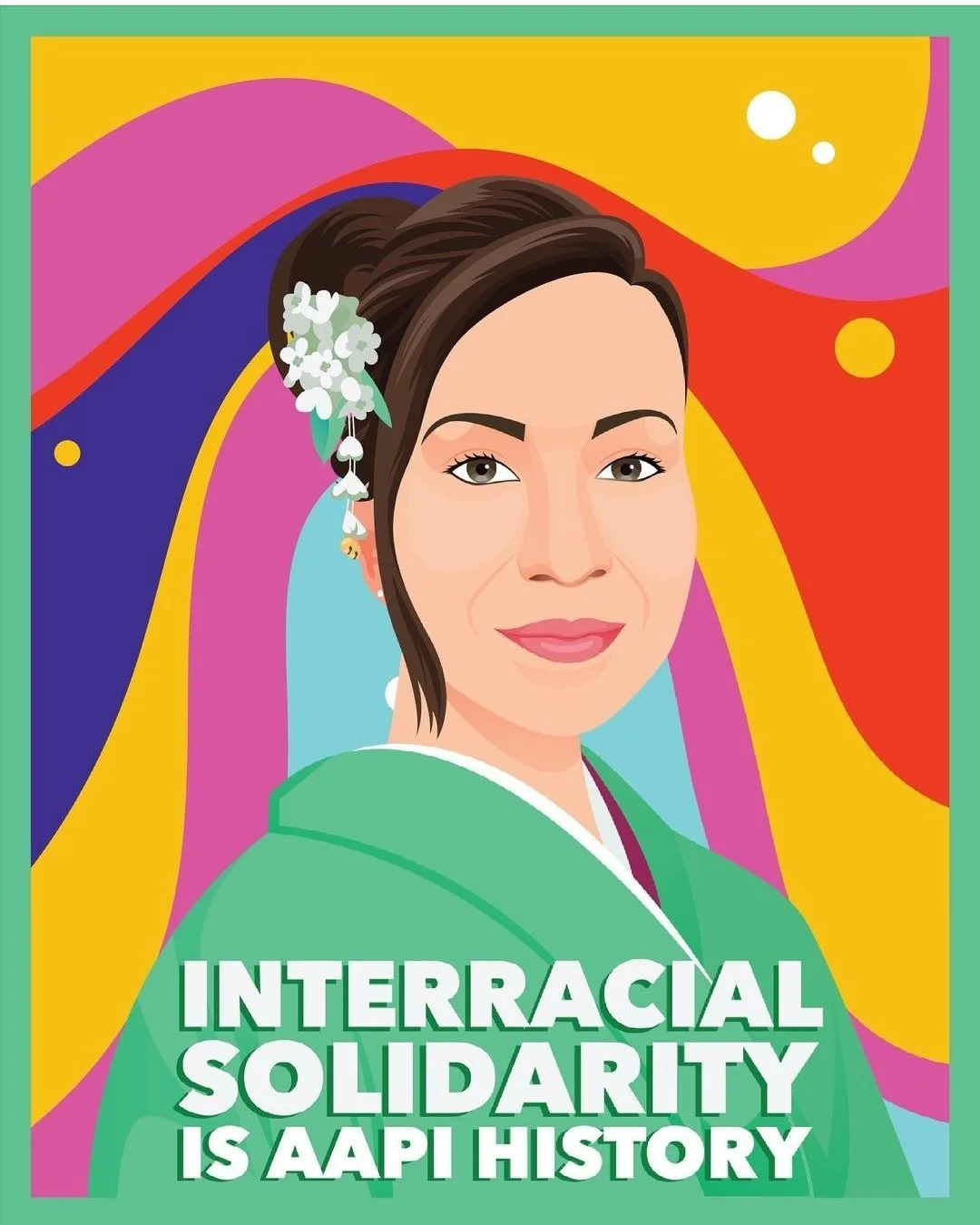Interracial Solidarity is AAPI History
Asian Americans have participated in interracial movements throughout U.S. history. From Yuri Kochiyama who worked alongside Malcolm X, to Tamio Wakayama who joined SNCC, to Grace Lee Boggs who worked with the Black Power Movement in Detroit. Asian Americans have also organized in solidarity with the Latinx community, from the Japanese Mexican Labor Association that led a massive beet strike in 1903, to Larry Itliong and the Filipino farmworkers who went on strike and reached out to Mexican farmworkers to join them, leading to the formation of the United Farm Workers in 1965.
Teaching this interracial history is central to the work of Dr. Laura Emiko Soltis, a Japanese American human rights educator in Atlanta. Since 2014, Emiko has led Freedom University, an underground freedom school for undocumented students banned from equal access to public universities in Georgia. In her classrooms, she brings together Latinx, Black, and Asian undocumented youth alongside a cadre of diverse faculty and Black Freedom Movement veterans. By teaching interracial history, Emiko is doing the daily work of building beloved community, and empowering a new generation of freedom fighters.
Emiko explains: “After slavery, incarceration became the new means of controlling the labor and free movement of African Americans, while race-based exclusion acts, labor importation programs, and deportation became the new means of controlling the labor and free movement of Asian, Latinx, and Afro-Caribbean immigrants. But alongside this history, the long Black freedom struggle also laid the groundwork for the liberation movements of Asian American and Latinx peoples in the U.S., as well other human rights movements around the world. While racism changes over time, and its form adapts in different communities, its function is the same: to rationalize accepting the labor of people of color, while denying their human rights. In this system of white supremacy, people of color can either consent to compete against one another or replace one another, or they can resist this system by joining together in solidarity. As an Asian American, I choose solidarity.”
Art by @stattheartist.


